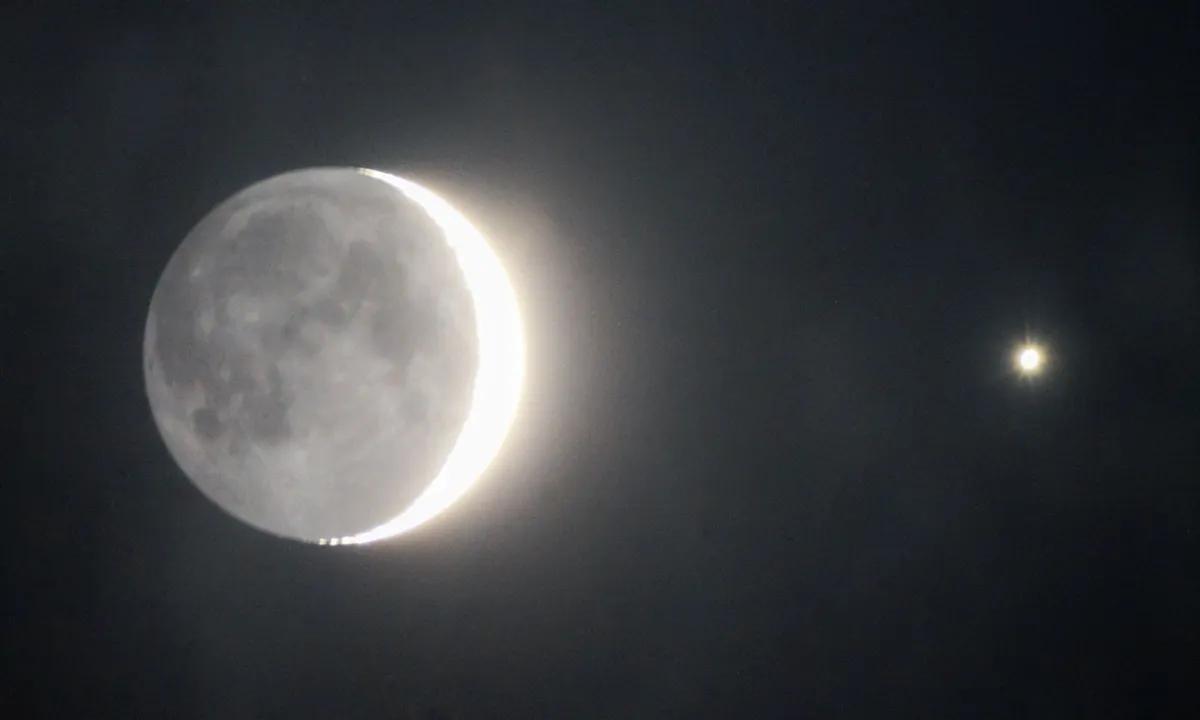Venus will disappear behind the Moon, then re-emerge out the other side, on 19 September 2025 in an event known as a lunar occultation.
Lunar occultations can involve a variety of celestial objects, be they planet, star or star cluster.
It simply means that, the Moon being the closest celestial object to Earth, from our perspective a more distant object disappears behind the Moon, then reappears from the other side.
For general advice, read our guide on how to calculate and observe a lunar occultation.

A daylight lunar occultation of Venus
The lunar occultation of Venus on 19 September 2025 will be under full daylight, but magnitude –3.8 Venus will still be visible.
What might be a little harder is the 5%-lit waning crescent Moon that’s doing the occulting.
Here, clear, crisp skies are best, as any haze may obscure the Moon.

Venus appears 11 arcseconds across at the time of the occultation, with an 88%-lit gibbous phase.
It’s the bright limb of the Moon that first encounters the planet, the event starting around 12:48 BST (11:48 UT) as seen from the centre of the UK.
Lunar parallax shifts the Moon’s apparent position relative to Venus, so timings will vary by a few minutes depending on your location.

How to observe
The best strategy is to locate Venus well before the lunar occultation starts, and remain centred on it.
At occultation start, the Moon’s centre will be 27° from the Sun’s centre, close enough to require caution if you’re using binoculars.
That's because observing the Sun with your naked eye or, worse, through a pair of binoculars or a telescope, could seriously damage your eyesight. If in doubt, don't attempt it.

The best technique is to stand in the shadow of a building, so the Sun is hidden but the sky to the west (right) of it is clear.
Venus will reappear at around 14:07 BST (13:07 UT), though this will test your nerve as you won’t be able to see the dark portion of the Moon from which the planet emerges.

Use an equatorial mount
If you doubt your ability to find Venus during the day, one method is to first locate the planet in the early morning dawn twilight sky.
Then, using an equatorially mounted scope, stay with it until the occultation occurs.
Admittedly, this does require you to have a few hours spare on the morning of 19 September.
Alternatively, locate Venus at 11:25 BST (10:25 UT) when it’s due south at an altitude of 50°.
If you do manage to observe or photograph the lunar occultation of Venus on 19 September, share your images with us and they could appear in a future issue of BBC Sky at Night Magazine.

